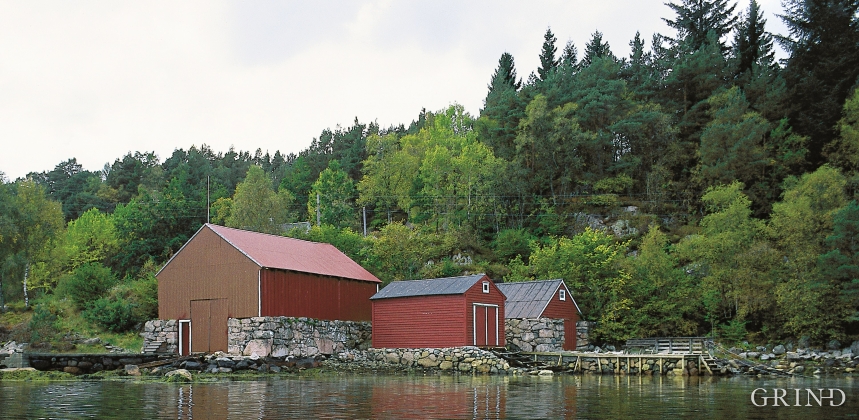Published: 25.07.2015 | Author: Øystein Jansen
Much of Reksteren is granite bedrock. The mighty Reksteren granite covers central parts of Reksteren, while in the north we find another, smaller granite outcrop, known as the Håkre granite. The granites are intrusive rocks that have intruded their way up from the depths and solidified, the Reksteren granite first and the Håkre granite some millions of years later. The Håkre granite is mainly grey, but with some red content, such as along the road by Hopssundet Sound. The reddish granite has been used as building stone, and we find it in a few buildings in Bergen. The Danielsen Upper Secondary School at Kong Oscars Road from 1914 has incorporated the granite in its foundation and in details of its facade.
The right to mine the red granite on Vernøya Island was transferred in 1901 from the landowners at Øvre Hope to a private concern. We know little of their work, but it is a beautiful granite, and is referred to several places by different authors from the beginning of the last Century. Later, in 1918 and 1923, the company A/S Vestlandske Grantiflet bought the rights to quarry the grey granite nearby, and a great production began in several of the quarries in the area, of road stone and edging stone for pavements .
Feldspar crystals
In many localities, the Reksteren Granite contains centimetre-large crystals of a variety of feldspar mineral, known as microcline. These crystals were able to grow quite large when the magma (molten rock) was deep under the earth's crust, because the temperature in the magma cooled slowly. Since then, the viscous molten lava moved upwards in the earth's crust. The large feldspar crystals were carried along, in the rest of the "soup", which solidified around 440 million years ago. (Haakon Fossen)
- Heldal, T.; Jansen, Ø.2001. Steinbyen Bergen. Fortellingen om brostein, bygg og brudd. Nord 4.




